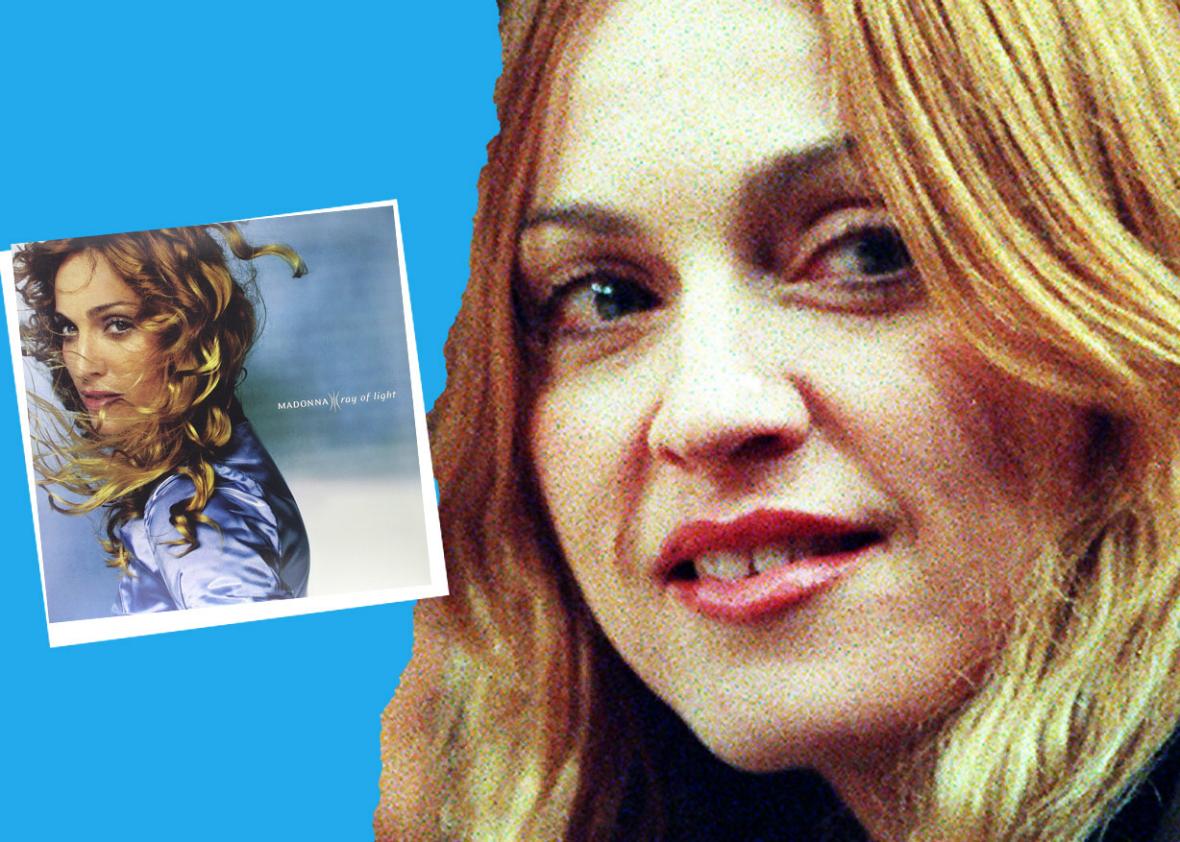Hit Parade: The Veronica Electronica Edition
In 1998, at a crossroads, Madonna rebooted her career by fusing electronics with matters of the heart—and turned digital music into viable pop.

Photo illustration by Natalie Matthews-Ramo/Slate. Photo by Stan Honda/AFP/Getty Images.
Listen to Episode 11 of Hit Parade:
In 1998, Madonna was at a career crossroads. After dominating the 1980s with hits like “Like a Virgin” and “Open Your Heart,” she spent the first half of the ’90s wavering between roles as a provocateur (Erotica, Sex) and adult-contemporary balladeer (“I’ll Remember,” “Take a Bow”). That’s when she took a sharp left turn, working with producers and DJs in the burgeoning electronica scene. If it even was a scene: The very term electronica was a music-business confection, and by 1997, it was more hype than hit. But the result of Madonna’s experiment—her acclaimed ’98 album Ray of Light—was not only one of her biggest smashes. It also helped turn electronic music into viable pop.
Slate Plus members: Get your ad-free podcast feed.
Email: hitparade@slate.com
Podcast production by Chris Berube.